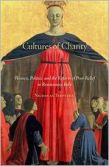Who Are the Worthy Poor?
By Nicholas Terpstra
Harvard University Press, $49.95, 400 pages
What to do with the poor, the sick, the orphaned and the widowed? It’s a question that has bedeviled cities, nations and empires for centuries. It is not just a modern phenomenon: even back in Renaissance Italy they tried to deal with this problem, and came up with many ideas but no total solution. In this book we look at one Italian city in particular, Bolonga ¬– a city that is largely forgotten when people talk about Italy. But it is a place that made some radical attempts to feed, clothe and care for its poor. Not all of them worked, and eventually all of them failed, but they were valiant attempts and Nicholas Terpstra does an excellent job covering the role that Bolonga played in caring for its less fortunate.
The Renaissance in Italy was a time of upheaval, famines, droughts and wars. The poor and the sick roamed the streets looking for any kind of work they could find; women sold their bodies; orphans were left to wander until they died in the streets. The city set up orphanages, places for widows to live together and a place for people thrown into poverty to stay while they worked day jobs. This book is an excellent look into this world before the advent of the modern social welfare state, showing us that this has been tried before.
Reviewed by Kevin Winter
[amazon asin=0674067096&text=Buy On Amazon][amazon asin=0674067096&text=Buy On Amazon&template=carousel]

